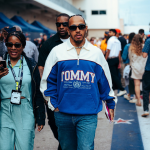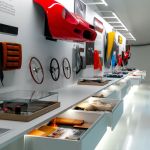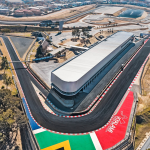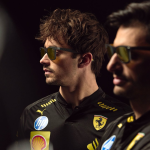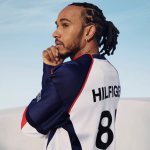
Tobacco and motorsport
The long sponsorships' saga started in 1968 still lasts today, despite the bans
March 6th, 2019
Presentations of new Formula 1 cars and new bikes that will compete in MotoGp create an ever-growing hype in those fans who, already in January, begin to dream about what will be the next season. Will we see young Leclerc in the top positions with Ferrari? Danilo Petrucci will amaze with Ducati? Will Lorenzo's and Marquez's Honda mix up at the head of the race or will Rossi's 46 win?
From a technical point of view, both the automotive world and the motorcycle world are constantly evolving during the season and often technical details are not disclosed to team presentations, but they emerge by rumors and leaks posted on social media. But what remains constant throughout the year is the livery with its colors: an important aspect in order to identify riders in the middle of the group during races.
In the next season you risk getting confused looking at races, at least for the colors of liveries and for the sponsors present: in fact both Ferrari and Ducati will carry the same brand, Mission Winnow, on a red background. A name that will not mean anything for most but that contains in itself the history of sponsorships from 1968 to today, that is from the first time that a car presented on the body the brand of a tobacco manufacturer.
HISTORY
John Love in 1967 had accomplished a business in the Grand Prix of South Africa, coming second at 42 with an old-fashioned engine mounted on the car. But it was the following year that changed forever the history of motorsport going on track with an orange car and, on a brown background, the words "Team Gunston". Gunston was a local tobacco producer, the first to appear on the cars that before had the national colors: the French cars were blue, the German white, the British green and the Italian red, which would result in the red Ferrari.
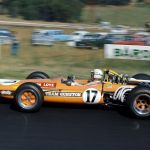
Lotus was the first to break this tradition: it showed up shortly thereafter at the Monaco GP not with only the brand of a tobacco manufacturer but also taking its colors, in that case white and red. The cars labeled "Gold Leaf" began the combination of tobacco and motorsport, which until then had been limited to being sponsored by gasoline, lubricants and tires.
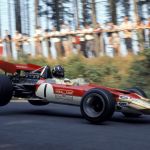
Meanwhile governments, taking note of the health risks deriving from smoking, began to prevent companies from direct advertising channels such as radio and TV: the first was Italy as early as 1962, followed by Germany, United Kingdom and France. Thanks to special exemptions Formula 1 and MotoGp were not affected by these prohibitions: teams received millionaire funding to bring names and colors of the biggest brands in the world that circumvented the legislation and entered a market with high visibility.
THE TOBACCO BAN
In 2001, FIA declared that all tobacco advertisements will be banned in Formula 1 at the end of 2006: major companies decided to shift their investments to MotoGp, where commercial relationships had already been going on since the 1970s.
Circus immediately started looking for new sponsors to make up for the loss of more than three hundred million revenues and, in the meantime, brought several races in those countries where legislation still allowed the publication of tobacco that since 2005 was banned by legislation of European Union.
In some races names of brands were transformed, to comply with the legislation but without upsetting the graphics, with different acronyms or reporting the name of the pilot: Gauloisess became GO !!!!!!!! on the Yamaha, Alonso replaced Mild Seven with his own name and surname as did Biaggi with Camel, Rothmans became an R with a question mark on the Renault.
The last car to explicitly bear the logo of a cigarette brand was Ferrari in 2007 with Marlboro, as well as Ducati in MotoGP. However, the two houses continued to collaborate with Philip Morris: on liveries in the following years a barcode appeared. Not explicitly but certainly it referred to the famous brand of cigarettes and carried with it various polemics.
The relationship has never really ended and will continue in 2019. Mission Winnow, major sponsor of Ducati and Ferrari for the new season, is owned by the American multinational. Although it is an initiative to support the development of new solutions in able to accelerate positive changes for society, the link between tobacco companies and motorsport remains strong. Also the British American Tobacco, that from 1999 to 2005 has possessed a team in Formula 1 then sold to Honda, will be present on the McLaren livery with the slogan "A Better Tomorrow", to support research and innovation.
Returns that have caused controversies but that have had no effect on what for years has been, in the eyes of the spectators, the real effect of the presence of tobacco advertising in motorsport: the unique mix of colors that brought different houses over the years to exchange colors and visually confuse enthusiasts.
An aspect that today is replicated by energy drinks brands, which have economically replaced the role played by tobacco producers: RedBull and Monster own teams in Formula 1 and MotoGp, sponsor athletes by paying part of their salary and supporting several teams in the race to world championship victory.
For the new Yamaha the black of Monster brand will be the main color along with blue, instead RedBull has taken different choices. In fact the Formula 1 team will have the dark red logo on a blue background, thus abandoning the yellow and presenting different color gradations from the classic ones, kept in MotoGP only partially, as for Team Tech3 colors will be an electric blue with the logo silver.
At a chromatic level, the great changes in livery that could be seen until the early 2000s and which accompanied the history of motorsport were not visible anymore, when the name of the tobacco manufacturer was clearly visible, which instead confused the manufacturer.
We have collected the best sponsorships of brands from the seventies to today.
GITANES
In 1977 the French brand brought Jaques Lafitte and Ligier to the first victory: it is a real sporting tale. French driver on a French car driven by a French engine: a dream for French people who dreamed of dominating the motorsport and, above all, the Italian Ferrari. Things have gone different, but that livery is still remembered today: with an elegant blue and white livery, it carried the French cigarette brand Gitanes written on the side, as the crowning achievement of a 100% French project.
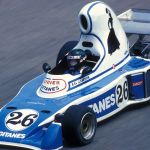
MILD SEVEN
Those cigarettes are no longer in the distributors today, despite being the best-selling in the world: they entered Formula 1 in 1994 as a Benetton sponsor and remained until the end of 2006, after winning two world drivers and constructors championships with Fernando Alonso. The blue color of the cars was picked up by the Japanese brand and accompanied by the yellow color that referred to the French manufacturer Renault.
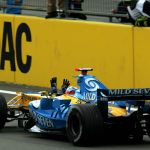
BENSON & HEDGES
Jordan was the first team for which Michael Schumacher raced: it was 1991 and, four years later, the Benson & Hedges cigarette brand appeared on the Irish team's cars and remained there until 2005. With the modification of the gold color of the packages sold, the yellow which was used allowed to identify easily cars, made especially unique by the crocodile graphics on the front.
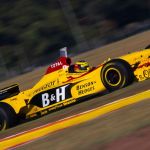
JOHN PLAYER
Colin Champan, after bringing on Lotus the first cigarette brand in 1968, also created cars of the British brand that won three world championships in 70s. In addition to being fast on the track, they are still remembered among the most beautiful cars of Formula1: black with gold details took up the graphics of the British cigarette brand John Player, who left the team in 1987 as well as Renault. The graphics were resumed in 2012 by Lotus-Renault and for the next season by the Haas team who, nostalgic of those years, presented a livery very similar to those used among others by the legendary Ayrton Senna.

CAMEL
It is one of the most iconic brands among those that have sponsored the Formula 1 and MotoGp teams.
On the four wheels he replaced the black and gold on the Lotus which, covered with yellow and blue, changed their look totally after several years: a color that today would be unpublished but which at the time was clearly visible.
But it is motorcycles that the best pairs have been created: after sponsoring Max Biaggi in 2005 on Honda, following his dismissal, the American brand becomes the main sponsor of his great rival, almost as if to confuse during the tussles between the two first positions. Valentino Rossi racing on Yamaha with a totally yellow livery, identical to that one which was used the previous year by Honda. It was the marriage that united the yellow of the cigarette brand and the one typically chosen by the champion of Tavullia for his number: a coincidence that did not lead to world victory but that created the best livery of the MotoGp in the new Millennium.
CHESTERFIELD
Not just Marlboro for Philip Morris: the American multinational also used the Chesterfield brand in motorsport to sponsor.
In MotoGP he colored Aprilia with black and Max Biaggi won from 1994 to 1996 in the 250cc class before landing in the premier class, while on the four wheels the adventure was not at all glorious. The American group was in fact present on the livery of the Lola T93/30, the first and only chassis designed for Scuderia Italia in 1993 by Lola Racing Cars that disappointed the high expectations. The team running with a white, red and yellow livery conquered zero points in the world and the project failed, but the livery remained in the memory of the fans.
GAULOISES
The French cigarette brand debuted in 1997 alongside Alain Prost in Formula 1, supporting the ambitious project of the former pilot who had created a team. On the blue car the brand remained for three seasons and also Jarno Trulli raced with the team, but the disappointing results led the brand to abandon the team.
In MotoGp the brand has gathered more fortune and, above all, visibility: it has sponsored for two seasons Valentino Rossi, paying much of the engagement in Yamaha with which he won the two world championships in 2004 and 2005. The blue hull presented the logo and written in white: remains in the memories especially for the replacement with the inscription GO !!!!!!! in the smoke-free countries, an incitement for the driver who drove.
LUCKY STRIKE
The famous American brand, present in several films and songs, sponsored Team Suzuki from 1992 to 1997 in the 500 class, with white livery that featured the iconic red circle on the side: the most important success was the 1993 world championship won by American Kevin Schwanz.
On four wheels, the team created by British American Tobacco in Formula 1 used the Lucky Strike brand as sponsor for the six seasons: the cars were white with red, gold and black details to pick up the colors on the packs from the forties.
MARLBORO
The iconic style of the brand, with red and white colors, made its debut in Formula 1 as early as 1972 on the British Racing Motors team's cars. During the presentation the car comes out of a giant cigarette pack and anticipates what normally happens today: the spectacularization of an event that takes the scene before the start of the season.
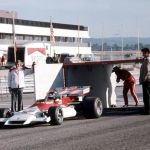
McLaren blew the sponsor at the BRM in 1974 and will make its title sponsor 1996. With the white and red livery won the world first constructors and drivers at the debut and repeated in 1976 with the iconic James Hunt, who was favored final victory from the accident to Niki Lauda. Thanks to the huge income generated by the cigarette brand McLaren began to focus its business in the racing world, gradually setting aside the production of cars that became secondary.
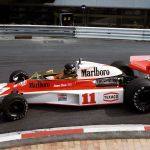
In those years not only the English team carried the mark on their cars: among the team sponsored by Marlboro there was also Ferrari, which had as a secondary sponsor since 1984. The Ferrari F310B was the first to bring the logo as a sponsor Marlboro main remained with the horse in 1997: the red of the packages is perfectly confused with the Ferrari red in a combination not only cheap but also chromatic.
On the two wheels the legendary Giacomo Agostini wore the Marlboro brand in the 70s on MV Augusta and, from the 80s until 2002, he was the main sponsor of Yamaha who came on the track with red bikes, an unusual color thinking of today's liveries.
In MotoGp we have to wait until 2003 for the color to come together: once the Japanese house has been left, the advertisements pass on Ducati which thus dress in the classic red color.
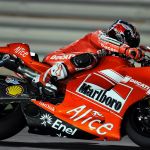
After hiding both in Formula1 and MotoGp with the iconic barcode, the collaboration remains the only one still unbroken in motorsport and, even under the name of Mission Winnow, continues to talk a lot about himself.

























